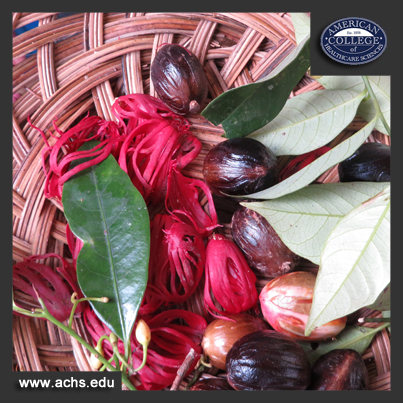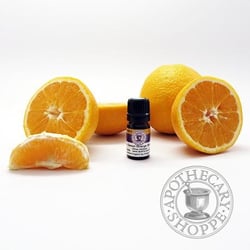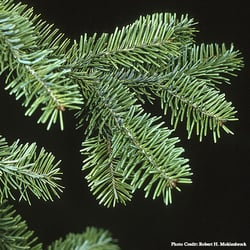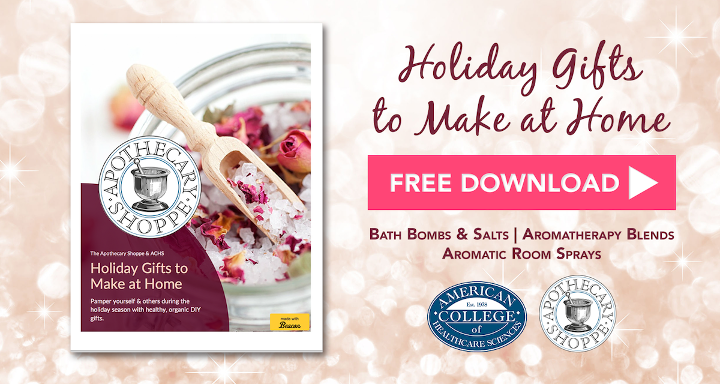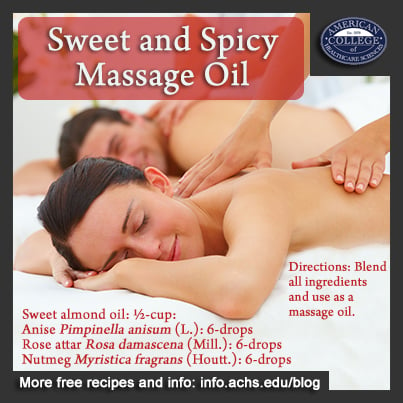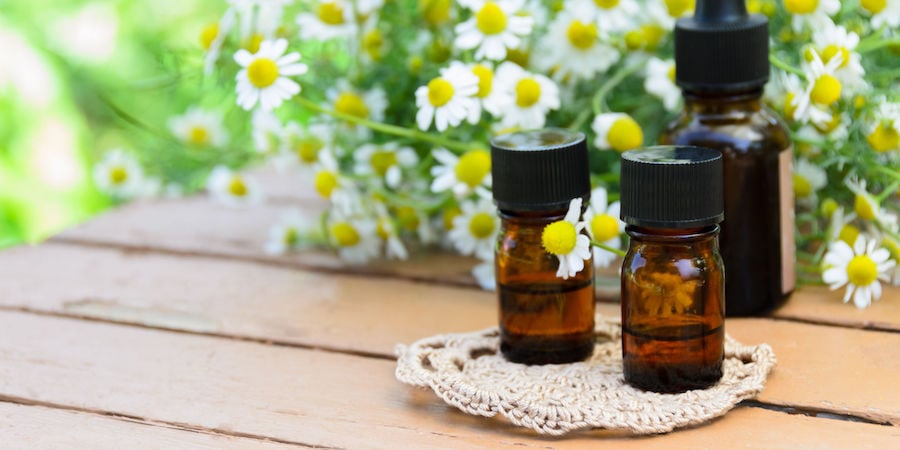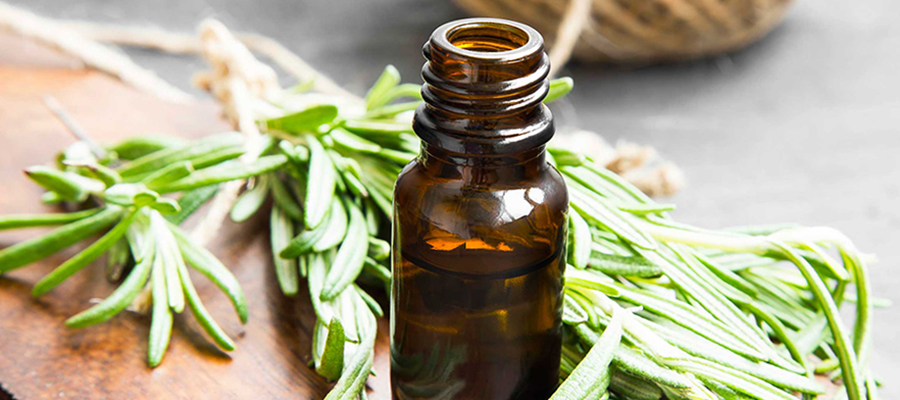It just isn't the holdays without the aromas of the holidays. For me, there are certain oils that evoke memories of long peaceful walks in fir forests, making clove and orange pomander balls, and simmering spiced cider on the stove. Each year, I have my firm holiday favorites, but this year these are the oils that are topping my list:
Nutmeg Myristica fragrans Essential Oil
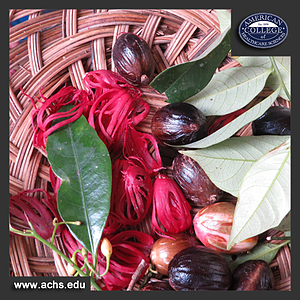
Nutmeg M. fragrans is an evergreen tree that usually grows 30 to 60-feet high (five to 13 meters). The bark contains pink or red sap. The flowers are pale yellow and female flowers are larger than male flowers; usually only one sex of flowers is found on an individual tree. The tree does not usually flower until it is nine years old; however, it will continue to flower for up to 75 years. When the fruit is ripe, it turns a golden color. It is only when the fruit dries that the brown seed (the nutmeg) is revealed. The bright red coating on the seed is known as mace. Our organic nutmeg essential oil is responsibly sourced from India. The essential oil is steam distilled from the seeds. Every batch of oil is Certified Organic by Oregon Tilth and produced without the use of genetic engineering, artificial fertilizers, or pesticides. Additionally, our expert aromatherapists here at the Apothecary Shoppe personally assess all of our oils—using touch, taste, smell, and lab analyses—to ensure that your essential oil is suitable for use and entirely free of adulterants. Nutmeg aromatherapy essential oil is a flavoring favorite in the kitchen for the holidays. Think seasonal cookies, grandma's rice pudding, or your favorite crème brûlée (it's even delicious on wilted greens). The essential oil has a similarly warm, spicy aroma, which makes it a favorite in seasonal blends, spicy perfumes, and men's products. Delicious!
Anise Pimpinella anisum Essential Oil
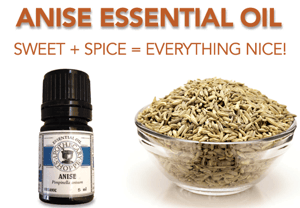
Anise is in the apiaceae family, which also includes caraway, coriander, dill, and fennel. All plants in the Apiaceae family carry their oil in their seed and have an affinity with the digestive system so are often used in cooking as spices. Anise is one of the oldest-known botanicals in aromatherapy and has historically been used as a spice, and is popular to balance digestion and stimulate appetitite. Pliny recommended it in the morning as a pick-me-up. Ancient Egyptians documented its use for household purposes. Charlemagne cultivated it on the imperial farms in the 9th century. Anise has a warm, soft, spicy, sweet, and rich fragrance. It blends well with lavender, pine, and rose attar for aromatherapy blends.It has a natural licorice-like flavor and savory, spicy aroma. The aromatherapy essential oil can encourage deep, rejuvenating inhalation. Our organic anise essential oil is responsibly sourced from Egypt. The essential oil is steam distilled from the seed. Every batch of oil is Certified Organic by Oregon Tilth and produced without the use of genetic engineering, artificial fertilizers, or pesticides. Additionally, our expert aromatherapists here at the Apothecary Shoppe personally assess all of our oils—using touch, taste, smell, and lab analyses—to ensure that your essential oil is suitable for use and entirely free of adulterants. A GC analysis of our Anise oil shows 89% anethole, 3.26% y-himachalene, and .98% astragal.
Do not confuse anise oil P. anisum with star anise Illicium verum (Hook. f.) oil. These two plants are very different botanically; P. anisum is from the Apiaceae family and I. verum is from the Schisandraceae (formerly Magnoliaceae) family. The fruit of both yield an essential oil of a similar composition, smell, and taste:
- P. anisum (Apiaceae) is an annual herb that grows wild in the Mediterranean area. The seed yields oil of anise.
- I. verum (Schisandraceae) is a tree found in Southeast Asia. The fruit yields star anise oil.
Both oils are known by the common name anise and contain a similar constituent profile with little variation. Both contain anethole. Pimpinella anisum, however, according to Guenther [1], yields a finer oil with a more delicate flavor. It is generally accepted among clinical aromatherapists that P. anisum is the more suitable anise for clinical aromatherapy. Star anise is used primarily in flavoring and perfumery[2]; it is less expensive and not as desirable for clinical therapeutic aromatherapy purposes.
The anise of the Bible (Mat. 23.23) is dill, a plant of the same family[3].
Sweet Orange Citrus sinensis Essential OilOn most holiday aroma lists is sweet orange. What's more refreshing than the citrus aroma that bursts forth when you peel an orange? Not surprisingly, since it is cold pressed from the peel of organic oranges, sweet orange essential oil has the same aromatic qualities, including a fruity, flowery aroma that can be wonderfully uplifting and soothing. Citrus sinensis essential oil has a pleasant sweet, fresh, and fruity scent.
Sweet orange C. sinensis is thought to be native to Eastern India, Pakistan, and Southern China. It has been cultivated for such a long time that it is seldom found in a wild state. Many cultivated varieties were developed in countries in which it was introduced. The sweet orange C. sinensis did not reach the Mediterranean until around the 13th century, after the bitter orange C. aurantium and lemon C. limon. Citrus came to the Americas in the very late 1400s, brought originally to Hispaniola (which is current day Haiti and the Dominican Republic) by the Italian explorer Christopher Columbus, who is credited with discovering America. Sometime in the mid-1500s Ponce de Leon, a Spanish explorer, led the first European expedition to what he later named Florida, where he brought the first citrus seeds. By 1579, orange C. sinensis trees were growing in St. Augustine, the country’s oldest city[4].
It is used extensively in aromatherapy, and commercially in soaps and floral perfumes. It harmonizes well in a blend at about a 5% concentration. Our certified organic sweet orange aromatherapy essential oil is responsibly sourced from the USA. The essential oil is cold pressed from the peel; this is preferred for maximum quality. Every batch of oil is Certified Organic by Oregon Tilth and produced without the use of genetic engineering, artificial fertilizers, or pesticides. Sweet orange volatilizes quickly (it is a top note) and does not store well, so blend in small quantities and keep in the refrigerator if possible.
Citrus Energizing Blend
Need an energizing boost for the holidays (or any time of year!)? Try this easy blend from Aroma 101 Introduction to Aromatherapy:
Sweet orange Citrus sinensis essential oil: 15 drops
Ginger Zingiber officinale essential oil: 15 drops
Blend the oils and add three drops to one tablespoon of carrier oil for a full bath or use in a foot or hand bath at least once daily. For those people who prefer the shower over the bath, adding this formula to liquid soap is an effective alternative.
Fir Needle Abies balsamea Essential Oil
Fir A. balsamea is a small-to-medium-sized tree that is native to North America and Canada. It has two-ranked needles in a v-shape. The needles are dark-green and matte on the outside and a silvery, blue-green on the underside. The fir's cones can grow to be about one-and-one-half to three inches long; originally they are dark purple but age into a brown color. Fir A. balsamea produces a resin that is clear and thick, like honey. This resin, or Canadian balsam, is where the tree derives its name[5].
Crisp, sweet, and invigorating, fir needle essential oil effortlessly whisks one’s senses away to a peaceful, lush forest. Fir needle Abies balsamea essential oil has a characteristic, fresh, and woody aroma, which makes it a frequent addition to aromatherapy holiday season blends, as well as air fresheners, disinfectants, detergents, and household cleaners. To avoid your holiday blend smelling like a cleaning product, fir blends well with sweet orange and other spice oils, like cinnamon and clove. With its vitalizing aroma, the fir needle essential oil is perfect to add to an inhalation blend, and it’s a robust addition to woodsy winter blends. Our organic fir needle essential oil is responsibly sourced from our neighbors to the north, Canada, where the essential oil is steam distilled from the needles.
Black Pepper Piper nigrum Essential Oil
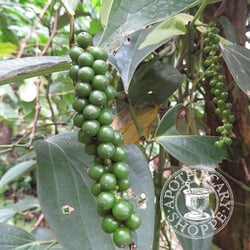
Black pepper was one of the first spices to travel the spice route and was perhaps one of the most expensive and treasured. The characteristically “peppery” aroma offers a stimulating ZING! It is also a very stimulating scent, which, like basil Ocimum basilicum essential oil, makes an interesting and effective addition to shower gels (especially morning shower gels). Its spicy, fresh aroma blends well with cardamom, frankincense, lavender, marjoram, and rosemary. Add to men’s fragrances or personal care items for a spicy, sporty undertone! Do not confuse with cayenne pepper Capsicum annuum (L.) or paprika Capsicum annuum var. annuum. Our certified organic black pepper essential oil is responsibly sourced from Sri Lanka. The essential oil is steam distilled from the dried, whole, unripe fruit. Every batch of oil is Certified Organic by Oregon Tilth and produced without the use of genetic engineering, artificial fertilizers, or pesticides.
Tropical Ease Blend
Try this blend created by Aromatherapy Department Chair Amanda Lattin for the Kona Aromatherapy Bootcamp 2018: Current Issues in Aromatherapy (request info on the next bootcamp here) that incorporates black pepper essential oil:
Rosemary Rosmarinus officinalis 4 drops
Black pepper Piper nigrum 3 drops
Geranium Pelargonium graveolens 3 drops
Ginger Zingiber officinale 1 drop
Blend the oils and add three drops to one tablespoon of carrier oil for a full bath or use in a foot or hand bath at least once daily. For those people who prefer the shower over the bath, adding this formula to liquid soap is an effective alternative.
Cinnamon Cinnamomum zeylanicum Essential Oil
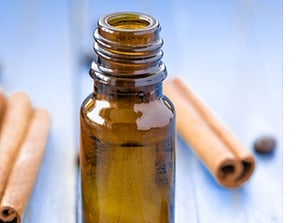 Cinnamon Cinnamomum zeylanicum essential oil has a characteristic odor and taste of cinnamon - which just sings holidays!!! There are a number of species of cinnamon that are used for essential oil. For essential oil production, the British Pharmacopoeia specifies the dried inner bark of the shoots of the coppiced trees of Ceylon cinnamon, containing not less than 1.2% volume by weight of volatile oil. Chinese cassia Cinnamomum cassia (Nees ex Blume), Indonesian cinnamon Cinnamomum burmannii (Nees & T.Nees) Blume, and Vietnamese cinnamon Cinnamomum loureirii are also used to produce essential oil.
Cinnamon Cinnamomum zeylanicum essential oil has a characteristic odor and taste of cinnamon - which just sings holidays!!! There are a number of species of cinnamon that are used for essential oil. For essential oil production, the British Pharmacopoeia specifies the dried inner bark of the shoots of the coppiced trees of Ceylon cinnamon, containing not less than 1.2% volume by weight of volatile oil. Chinese cassia Cinnamomum cassia (Nees ex Blume), Indonesian cinnamon Cinnamomum burmannii (Nees & T.Nees) Blume, and Vietnamese cinnamon Cinnamomum loureirii are also used to produce essential oil.
Cinnamon blends well in aromatherapy blends with rosemary, pine, and thyme. The aroma of cinnamon will transport you to a snowy winter's day, as the cozy aroma of holiday spices waft toward you from the kitchen. A wonderful herbal spice, cinnamon is a warming essential oil. This is the perfect oil for autumn or the Holidays, with a peppery and slightly woody fragrance. Try blending it in homemade soaps! Our cinnamon essential oil is organically grown and steam distilled in Madagascar from the inner bark of cinnamon tree shoots. Every batch of oil is Certified Organic by Oregon Tilth and produced without the use of genetic engineering, artificial fertilizers, or pesticides.
So tell us, what are your favorite essential oils for the holiday? Are you adding any new oils this year?
References
[1] Guenther, E. (1952). The Essential Oils: Volume 5. D.Van Nostrand Company Inc.
[2] Arctander, S. (1994). Perfume and Flavor Materials of Natural Origin. Allured Pub Corp.
[3] The Columbia Encyclopedia (5th ed.) (1993)
[4] Cooksey, M. (2013). The Florida Citrus Industry: Past, Present, and Future. IFEAT International Conference, San Francisco, California.
[5] Burfield, T. (2000). Natural Aromatics Materials, Odours and Origins, Vol I. The Atlantic Institute of Aromatherapy.

